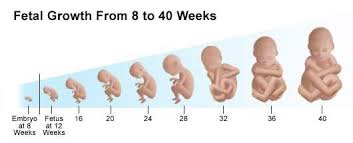
Quality of the Evidence
The quality of the evidence refers to the level of confidence in the evidence and ranges from very low to high.
High quality: The Guideline Consensus Panel is very confident that the estimated effect of physical activity on the health outcome is close to the true effect.
Moderate quality: The Guideline Consensus Panel is moderately confident in the estimated effect of physical activity on the health outcome; the estimate of the effect is likely to be close to the true effect, but there is a possibility that it is substantially different.
Low quality: The Guideline Consensus Panel’s confidence in the estimated effect of physical activity on the health outcome is limited; the estimate of the effect may be substantially different from the true effect.
Very low quality: The Guideline Consensus Panel has very little confidence in the estimated effect of physical activity on the health outcome; the estimate of the effect is likely to be substantially different from the true effect.
aThis was a weak recommendation because the quality of evidence was low, and the net benefit between women who were physically active and those who were not was small.
bThis was a strong recommendation because, despite low quality evidence supporting physical activity during pregnancy for women categorized as overweight or obese, there was evidence from randomized controlled trials demonstrating an improvement in gestational weight gain and blood glucose.
cModerate-intensity physical activity is intense enough to noticeably increase heart rate; a person can talk but not sing during activities of this intensity. Examples of moderate-intensity physical activity include brisk walking, water aerobics, stationary cycling (moderate effort), resistance training, carrying moderate loads, and household chores (e.g., gardening, washing windows).
dThis was a weak recommendation because urinary incontinence was was not rated as a “critical” outcome and the evidence was low quality.
eThis was a weak recommendation because: (1) the quality of evidence was very low; and (2) although harms were investigated there was limited available information to inform the balance of benefits and harms. This recommendation was primarily based on expert opinion.
======================================================================================
Abstract
Objective
The objective is to provide guidance for pregnant women, and obstetric care and exercise professionals, on prenatal physical activity.
Outcomes
The outcomes evaluated were maternal, fetal, or neonatal morbidity or fetal mortality during and following pregnancy.
Evidence
Literature was retrieved through searches of Medline, EMBASE, PsycINFO, Cochrane Database of Systematic Reviews, Cochrane Central Register of Controlled Trials, Scopus and Web of Science Core Collection, CINAHL Plus with Full-text, Child Development & Adolescent Studies, ERIC, Sport Discus, ClinicalTrials.gov, and the Trip Database from database inception up to January 6, 2017. Primary studies of any design were eligible, except case studies. Results were limited to English, Spanish, or French language materials. Articles related to maternal physical activity during pregnancy reporting on maternal, fetal, or neonatal morbidity or fetal mortality were eligible for inclusion. The quality of evidence was rated using the Grading of Recommendations Assessment, Development, and Evaluation (GRADE) methodology.
Values
The Guidelines Consensus Panel solicited feedback from end-users (obstetric care providers, exercise professionals, researchers, policy organizations, and pregnant and postpartum women). The development of this guideline followed the Appraisal of Guidelines for Research Evaluation (AGREE) II instrument.
Benefits, harms, and costs
The benefits of prenatal physical activity are moderate, and no harms were identified; therefore, the difference between desirable and undesirable consequences (net benefit) is expected to be moderate. The majority of stakeholders and end-users indicated that following these recommendations would be feasible, acceptable, and equitable. Following these recommendations is likely to require minimal resources from both individual and health systems perspectives.




